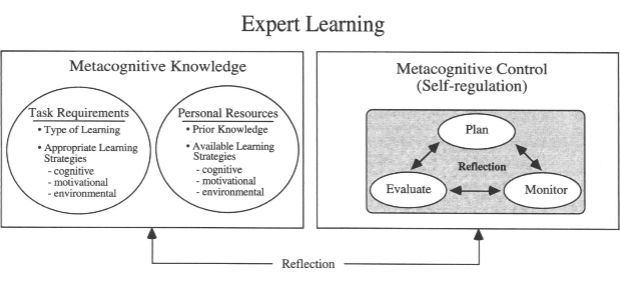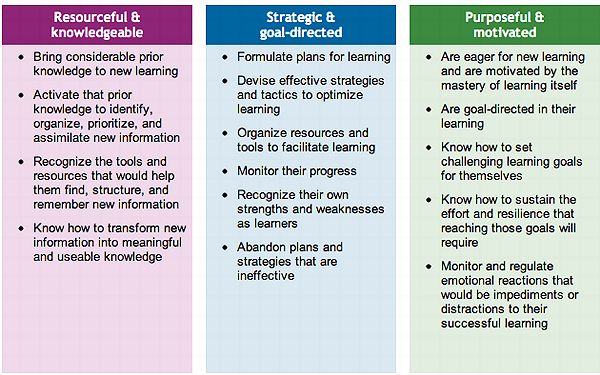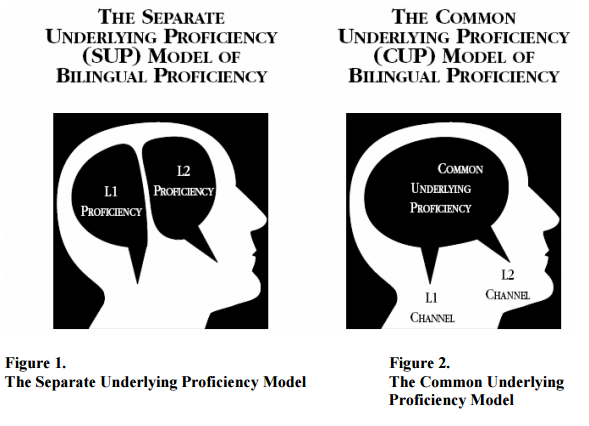“Although thinking is innate, skillful thinking must be cultivated.” (Art Costa, 2008).
Effective 21st century instruction teaches students how to think, not what to think. In 2013, The Huffington Post published an article arguing that many K-to-12 schools are not preparing students to be ready for the demands of today. Many schools still teach in the model of the industrial age, when education as we know it was born. This model consists of a one-size-fits-all, teacher-centered classroom where memorization, conforming to the group, and superficial demonstrations of knowledge are valued; a far reach from the critical thinking environment many educators now advocate.

Our society is rapidly changing with advances in technology, and many skills of the past are no longer relevant. Ofelia Garcia, an expert in bilingual education, posits that teachers should favor critical thinking over drill, remediation, and regurgitation. Our students must be prepared for the modern workforce, which calls for innovative problem solvers with the motivation to learn. The educator’s primary job is to ensure that the art of thinking is being valued, encouraged, and challenged in the classroom.
Derek Cabrera is a professor at Cornell University and a researcher at the Santa Fe Institute. At the Cabrera Research Lab, he and his team investigate how thinking works. Cabrera defines thinking as a process of taking information and doing something meaningful with it. Cabrera reveals that even as an ivy league professor, he is not always impressed with his students ability to think. They are supposed to be the “smart kids”, but some struggle to complete an unstructured task for which they are not prepared, like solving a complicated problem. According to Cabrera, humans are wired to think critically, but the over engineering of content curriculum, especially in grades K-12, is stripping students of their innate thinking systems by conditioning them to simply “do school”. He observes that his ivy league students are mostly skilled at following directions and taking tests.
Cabrera has identified universal thinking skills that are applicable to any context, and he challenges K-to-12 educators to put thinking back on the desk of each child and to teach thinking skills above all else. He urges educators to cultivate students’ natural talent for thinking by giving them the tools to structure information in meaningful ways. In a TED talk, he describes what he calls the DSRP thinking model which is outlined below.
D: Make distinctions between ideas, objects, theories, etc.
S: Analyze systems; every whole is a part and every part is a whole.
R: Recognize relationships between and among ideas.
P:Take multiple perspectives for increased empathy, increased compassion, negotiation, conflict resolutions, prosocial thinking and emotional development.
Cabrera is also a proponent for teaching metacognition, a higher-order of thinking that involves an awareness and control over one’s cognitive processes.
Why are Metacognitive Skills Important?
Metacognition has recently been identified as one of the five key components for 21st century learning by the Partnership for 21st Century Skills (P21). In simple terms, metacognition is thinking about your thinking, and it directly relates to the other four components: critical thinking, creativity, collaboration, and motivation. Metacognition is highly important for success in postsecondary education and in the workforce.
Teachers cannot possibly teach students all they need to learn. They can, however, prepare students to learn how to learn. Metacognitive instruction empowers learners by giving them an understanding of how they think. It calls for students to take responsibility for their learning process by equipping them with tools to tackle challenging tasks. Educators can condition students to be thoughtful knowledge seekers and reflective learners. Metacognitive skills prepare students for lifelong learning.
How can LFNY teachers harmonize their instructional practices to equip our students with metacognitive skills?
Over the next five years as part of its strategic plan, “Our Vision,” the Lycée Français is investing much time and focus on enhancing the learning experience for all students, with a fundamental objective of “providing bilingual, pluricultural education of the highest caliber.” As part of this goal, school faculty met regularly during the 2014-2015 school year to reflect on the school’s pedagogical philosophy and to review best practices in bilingual education.
I was part of a group focused on “Literacy in Two Languages” and discovered that though French and English teachers may have different approaches, we share fundamental values regardless of the language or subject of instruction. However different our methods might be, our objectives are the same.
As a teaching community, we hope our students will grow to be self-aware, self-directed, and self-regulated lifelong learners. Metacognitive instruction develops these qualities. Though this might look different at each grade level, it begs the question: How can the LFNY teaching community harmonize our instructional practices to effectively and efficiently equip our students with metacognitive skills? Furthermore, how can we leverage our students’ bilingualism to enhance their learning experience? I was able to research these and other topics related to metacognition extensively this summer with the support of the LFNY.
What are the Habits of Expert Learners and How Can They Inform Instruction?
As an English support teacher in fourth and fifth grades, I made interesting observations while administering formal reading assessments in the grade-level English classes. The assessment requires that each child read part of the text aloud to me and the rest of the passage silently. During the read aloud, I am not only assessing the student accuracy, fluency, and comprehension, but also their ability to monitor their own comprehension.
Successful readers are actively and effectively monitoring their comprehension.
For example, if a student comes to an unfamiliar word, I observe whether or not he or she tries to figure it out. If a child reads a word incorrectly, I note whether or not he or she attempts to self-correct. Through this limited data, I noticed that students who are able to identify that they don’t understand the passage, are able to problem solve to figure out the meaning and then to successfully pass the assessment.
In other words, successful readers do not continue reading until they have figured out an unfamiliar word or a confusing part of the text. They are actively and effectively monitoring their comprehension. Successful students are expert learners. Regardless of their proficiency or ability in English, they are strategic, purposeful, and motivated, and they take responsibility for their learning from start to finish. They have metacognitive knowledge and control. The diagram below was created by Peggy Ertmer and Timothy Newby of Purdue University.
The National Center on Universal Design for Learning (UDL) defines an expert learner as resourceful, knowledgeable, strategic, goal-oriented, purposeful, and motivated. UDL constructed a model that shows the components of expert learning as depicted below. When instruction is focused on conditioning students to internalize these behaviors, they are being set up for academic success. Empirical research proves that all students can be taught the skills of an expert learner to improve their academic performance.
How Does Metacognitive Instruction Impact Biliteracy Acquisition?
Metacognition plays an important role in biliteracy acquisition as bilingual students can utilize an additional set of strategies specific to knowing additional languages. Languages support each other in dual-language reading instruction, as there are many universal skills that transfer. In a study of second language Latina/o readers conducted by Jiménez, García, and Pearson, successful second language readers were found to 1) have strong literacy skills in their dominant language, 2) use their first language to read in a second language, 3) have a unitary view of the reading process across languages, and 4) consider their first language as an asset. Moreover, these students have metacognitive knowledge and control over their cognitive processes while they read and are strategic problem-solvers. Strategies that can be used specifically by bilingual readers are:
- – Searching for cognates (Cognate awareness activities)
- – Translating (words or whole sentences/paragraphs)
- – Information transfer in regards to story structure—the view of reading as the same process in both languages
In the recent past, bilingualism was viewed as a deficit. Current research suggests without question that it is in fact an asset. Jim Cummins, a professor at the University of Toronto and expert on bilingual education, supports the idea that bilinguals have an underlying proficiency along with a unique linguistic repertoire that can have a positive bilateral effect on literacy acquisition from a student’s first language to his or her second language and vise versa. Cummins’ interdependence hypothesis explains that literacy instruction in the dominant language develops a child’s conceptual and linguistic knowledge which transfers when learning a second language. Additionally, becoming literate in a second language can further develop literacy in the dominant language.
Metacognitive reading instruction reaches beyond the vast range of pedagogical practices between the French and American system in that it teaches children how to think skillfully and how to use their bilingualism as an asset. As the two languages in the bilingual brain exist in harmony and create the language of bilingualism, French and English teachers can work together to plan literacy instruction that mirrors the workings of the brain.
About the Author :
Carolyn O’Brien has been a Primary English teacher at the Lycée Français de New York since 2008. She holds a Masters of Science in Childhood Education. Carolyn is the Academic Support Coordinator for the Elementary English Department and teaches 1st and 5th grade. In 2015 and 2016, she received grants from the Lycée to research and implement best practices in metacognitive skill instruction in bi-literacy development and continues to provide professional development in this area. She is an active committee member and dedicated to the Lycée’s mission.





